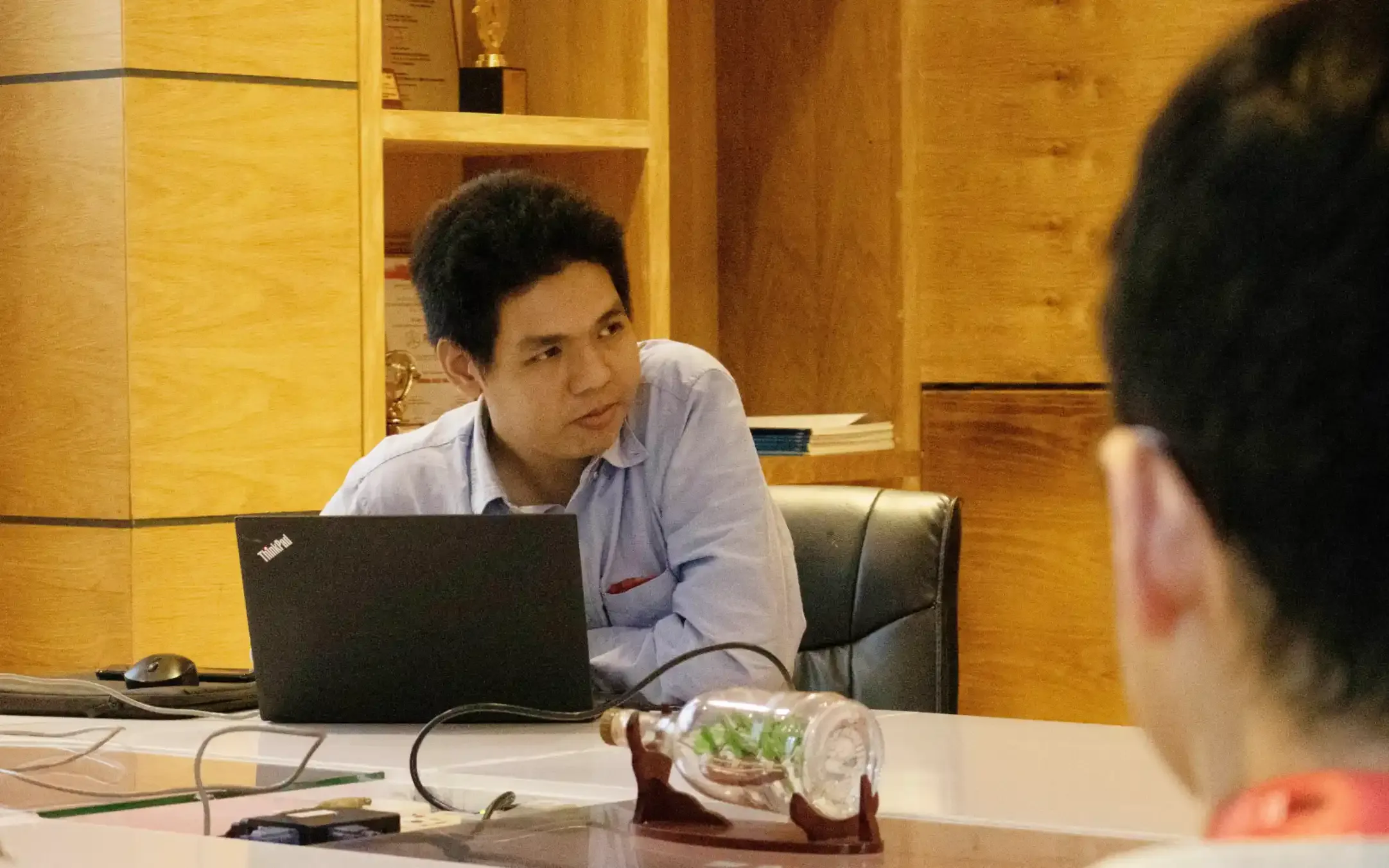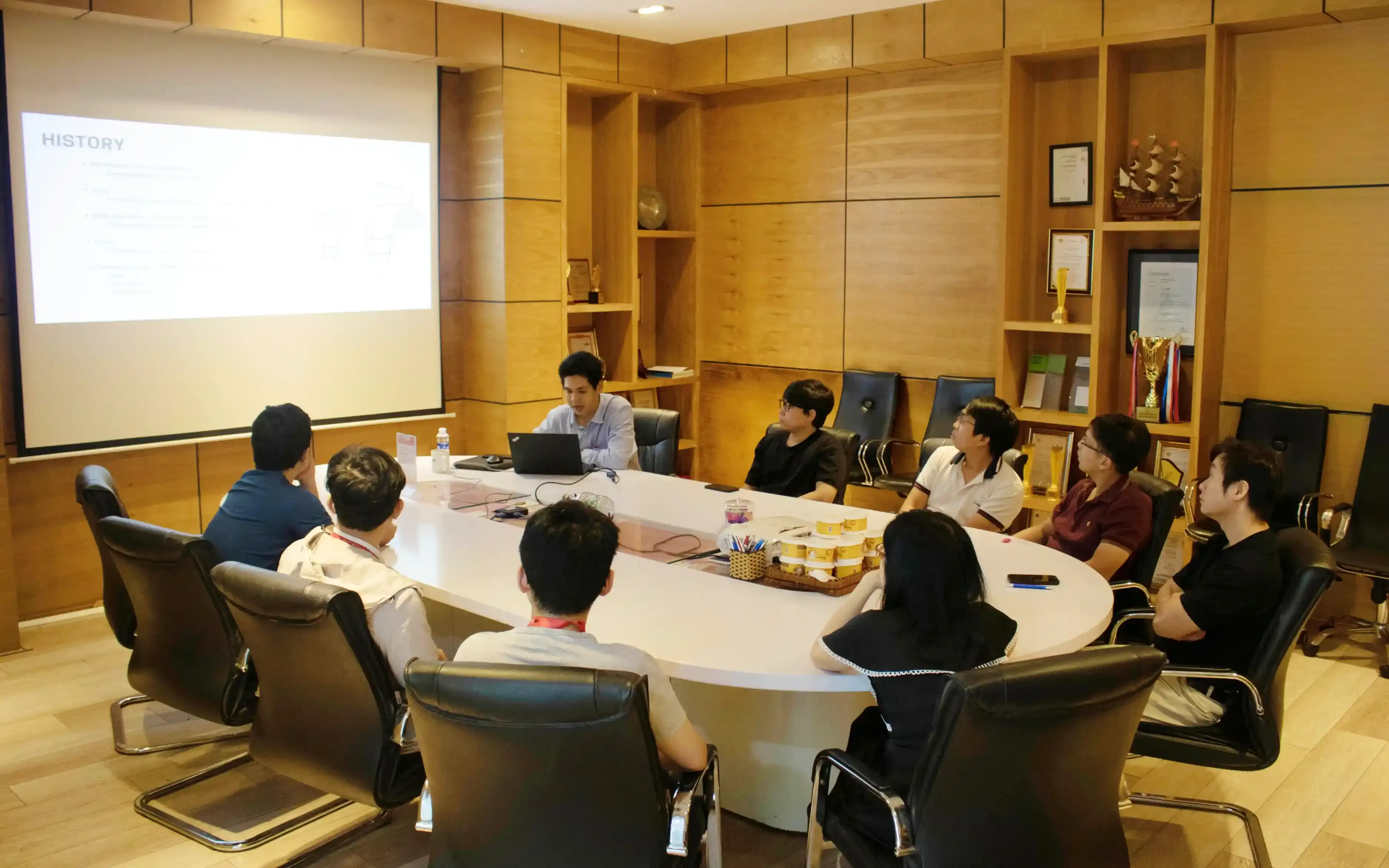Linux Essentials Training Recap

News
On April 4, 2025, S3Corp. hosted an internal knowledge-sharing session titled “Linux Essentials.” This workshop focused on improving foundational understanding of the Linux operating system. The goal was to help team members better understand how Linux works at the system level and how its key components interact. The training was part of the ongoing effort to strengthen technical awareness across teams and foster continuous learning inside the organization.
04 Apr 2025
On April 4, 2025, S3Corp. hosted an internal knowledge-sharing session titled “Linux Essentials.” This workshop focused on improving foundational understanding of the Linux operating system. The goal was to help team members better understand how Linux works at the system level and how its key components interact. The training was part of the ongoing effort to strengthen technical awareness across teams and foster continuous learning inside the organization.
The session opened with a detailed explanation of the Linux operating system as a whole. Participants explored what makes Linux unique, its role in modern infrastructure, and its widespread use in development and production environments. The trainer walked through the reasons Linux remains essential for software engineers, QA testers, DevOps teams, and system administrators. Emphasis was placed on how learning Linux fundamentals can help team members navigate systems more confidently and troubleshoot more effectively.
A major part of the session focused on understanding the core components that form the foundation of Linux. The discussion included the Linux kernel, which acts as the central controller between hardware and software. The training then moved to explore the shell, the interface where users interact with the system, often via command-line input. Next, attention turned to filesystems and their structure within Linux, highlighting how data is stored, accessed, and managed.
 Processes and services were introduced to help participants understand how
Linux manages applications and background operations. The trainer showed how
the system handles multiple tasks simultaneously and maintains system
efficiency. These concepts were reinforced with examples to clarify how these
components work together in real-world use.
Processes and services were introduced to help participants understand how
Linux manages applications and background operations. The trainer showed how
the system handles multiple tasks simultaneously and maintains system
efficiency. These concepts were reinforced with examples to clarify how these
components work together in real-world use.
A core section of the workshop explained how Linux organizes its files and directories. This included a walkthrough of the root directory and subdirectories such as /bin, /etc, /home, and /var. Each directory was described by its purpose and how it supports system operations. By understanding this structure, attendees learned how to locate configuration files, binaries, logs, and user data more quickly.
 The workshop also introduced how permissions are assigned within this
structure. The presenter explained read, write, and execute permissions in
detail, providing a practical view of how access is granted and restricted
within the system. The content helped improve confidence in navigating and
modifying file attributes using terminal commands.
The workshop also introduced how permissions are assigned within this
structure. The presenter explained read, write, and execute permissions in
detail, providing a practical view of how access is granted and restricted
within the system. The content helped improve confidence in navigating and
modifying file attributes using terminal commands.
The next segment of the training focused on how individual parts of Linux work together to provide a complete system environment. The kernel, shell, filesystems, and processes were revisited to show their interaction. The presenter explained how user commands are passed to the shell, how the shell communicates with the kernel, and how the kernel manages the requested operations.
This segment also covered how user sessions begin at login and how system services are started and stopped. Special attention was given to how Linux manages startup routines and background services, helping participants understand what happens behind the scenes when the system boots.
Security fundamentals were covered in the last part of the workshop. Participants were introduced to basic Linux security principles. The session began with user and group management, showing how user accounts are created and managed, how groups help organize access, and how root access should be controlled.
The trainer then explained file permissions and ownership as the first line of defense in system security. Command-line tools such as chmod, chown, and passwd were introduced to demonstrate how users can modify access rights and secure sensitive files.
The discussion closed with an overview of system updates and the importance of regular patching. Emphasis was placed on keeping systems updated as a key security practice. While the training remained focused on the basics, it clearly established the importance of understanding and maintaining system security as part of daily workflows.
This session was part of S3Corp.’s broader commitment to continuous learning. By offering internal workshops like Linux Essentials, the company reinforces the value of building a technically strong, well-informed team. These training opportunities create space for hands-on learning and cross-team interaction, helping professionals deepen their skill sets and stay sharp in a competitive industry.
Training sessions like this one reflect the shared belief that growth starts with knowledge. By enabling employees to revisit essential topics like Linux system architecture and security, the company strengthens its development, testing, and operations capabilities. This knowledge not only supports individual improvement but also raises the technical standard across projects and teams.
Through structured, focused workshops, S3Corp. ensures team members continue developing skills that support performance and technical confidence. The Linux Essentials session reinforced the importance of system-level understanding and will serve as a foundation for future sessions exploring more advanced topics.
The Linux Essentials workshop delivered valuable insights into the inner workings of the Linux operating system. With focused discussion on system components, organization, and security basics, the training strengthened foundational knowledge across the team. This event was one of many steps in the company's learning roadmap, supporting technical growth and teamwork across roles.
Whether you have any questions, or wish to get a quote for your project, or require further information about what we can offer you, please do not hesitate to contact us.
Contact us Need a reliable software development partner?
S3Corp. offers comprehensive software development outsourcing services ranging from software development to software verification and maintenance for a wide variety of industries and technologies
Software Development Center
Headquater 307
307/12 Nguyen Van Troi, Tan Son Hoa Ward, Ho Chi Minh City, Vietnam
Office 146
3rd floor, SFC Building, 146E Nguyen Dinh Chinh, Phu Nhuan Ward, HCMC
Tien Giang (Branch)
1st floor, Zone C, Mekong Innovation Technology Park - Tan My Chanh Commune, My Phong Ward, Dong Thap Province
_1746790910898.webp?w=384&q=75)
_1746790956049.webp?w=384&q=75)
_1746790970871.webp?w=384&q=75)
